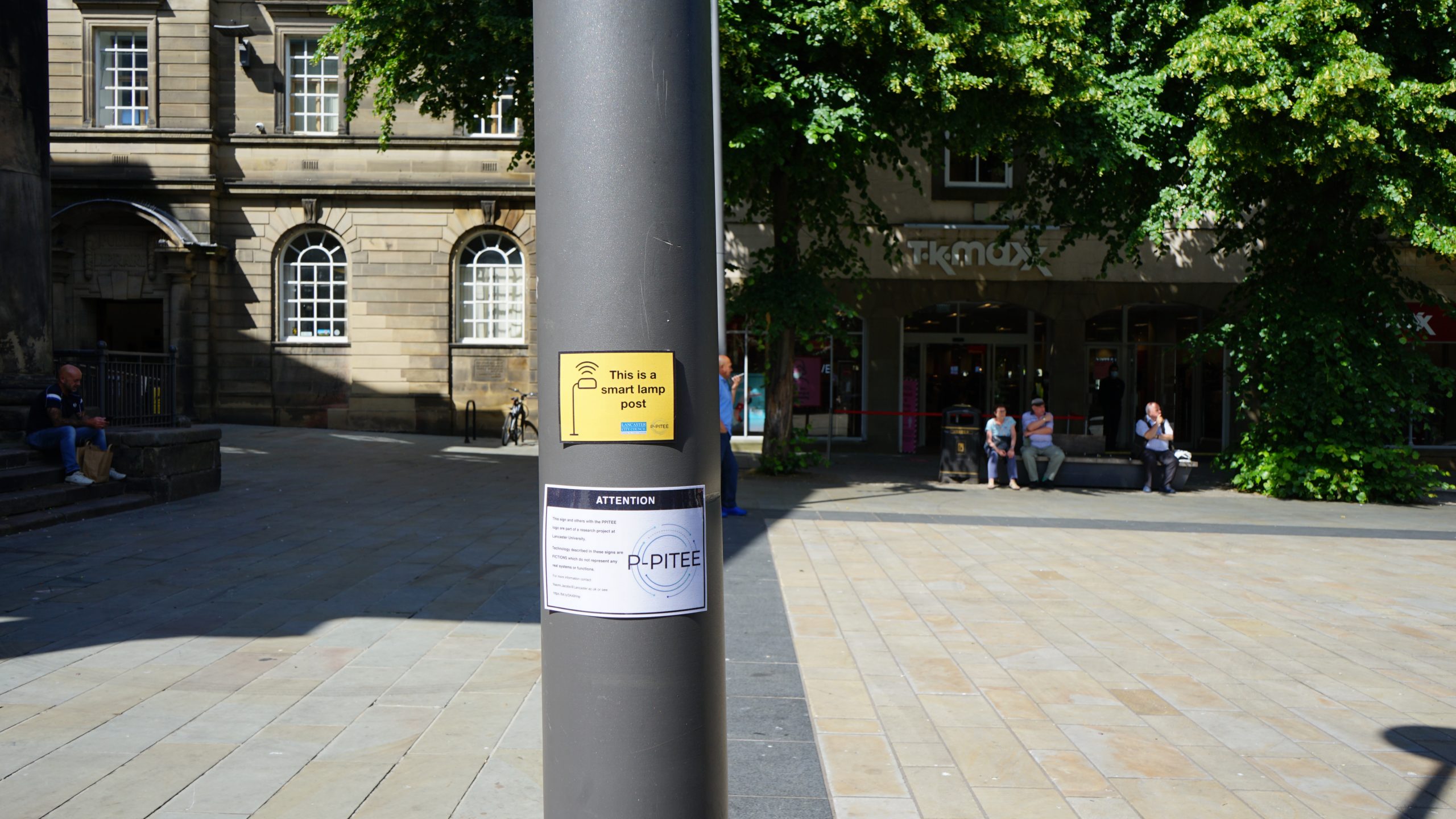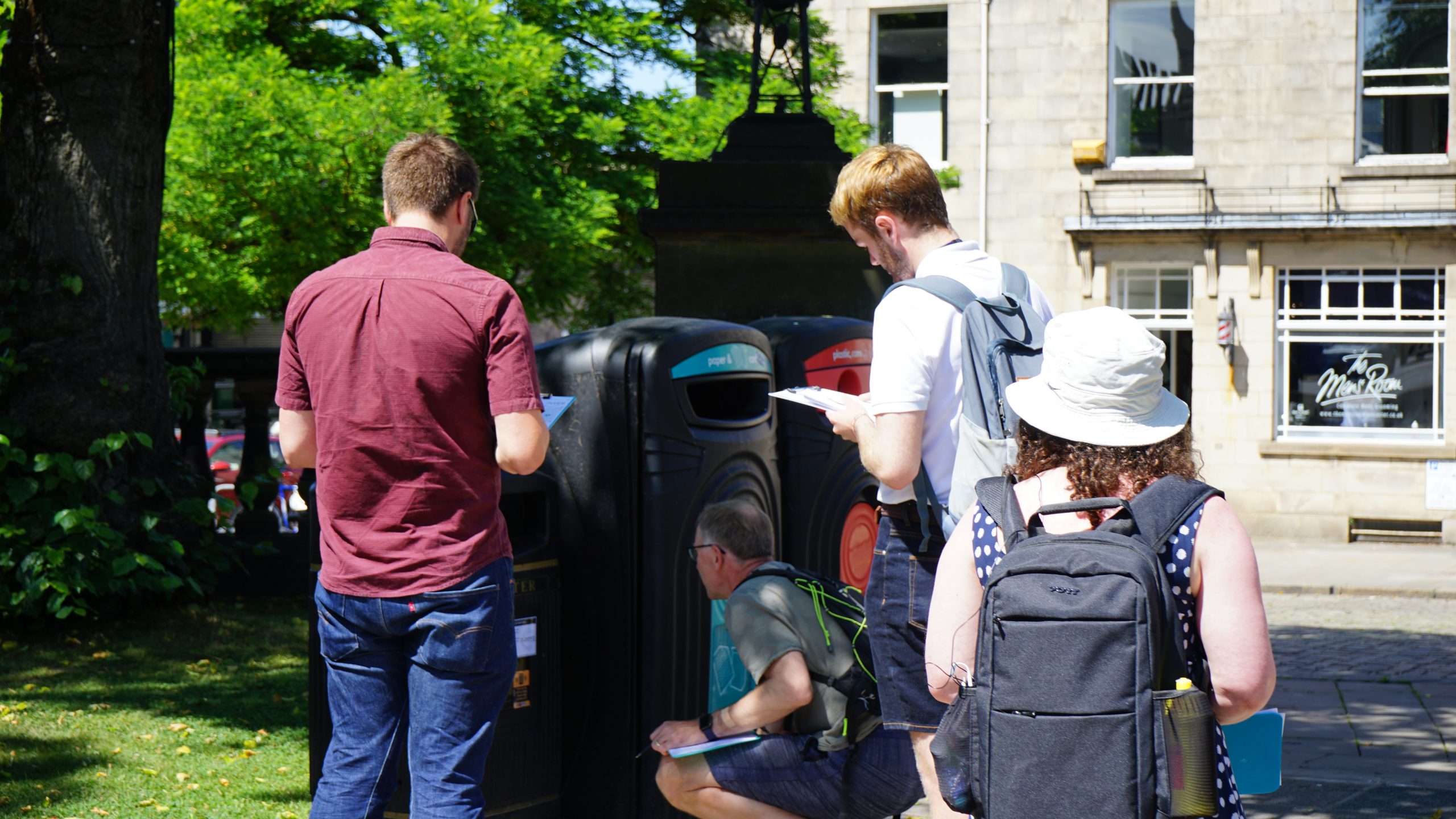On 1st July we held our first research event for the P-PITEE project with participants from Lancaster City Council. As we are exploring IoT and Edge Computing in public places we decided to hold a walking workshop around the city centre. We wanted to explore how different people understand the possible benefits and risks of sensors that are capturing a wide range of data in public spaces so that we can begin to co-design an IoT/Edge Computing policy with the council.
As fans of Field Guides, we wanted to make the walk fun and so we created our own version, ‘A Field Guide to IoT in the City’, which was designed by our PhD candidate, Nuri. We chose 8 sites around the city centre, some of which were real sensors and some of which weren’t. Using design fiction, we created signs at some of the locations to illustrate possible data collection and processing methods and asked our walkers to think about the possible benefits, challenges and risks associated with the particular IoT/Edge Computing Device.
The activity focused on imagining our future public spaces through imaginary IoTs placed in the physical spaces. The participants discussed how we can deploy smart technology and how the public will accept it. The key benefits and risks highlighted by the walkers are:
The benefits:
- Cost-efficiency of IoT
- Crowd controlling in public places
- Better operation and decision-making
- Energy saving
The risks:
- Processing and storage personal data
- Collecting reliable data
We also identified the further questions:
How might we understand the impacts of sensors that are capturing movement, environmental and personal data in public spaces?
The next stage of our project will be to carry out the same walk with several different groups, including Cyber Security experts and members of the public.


